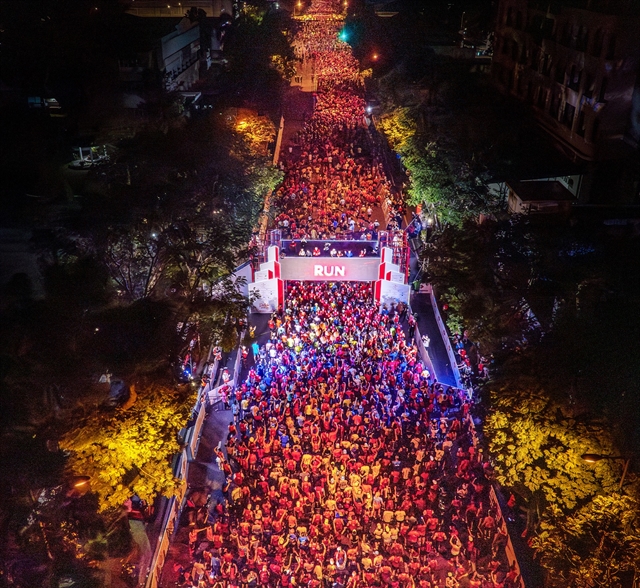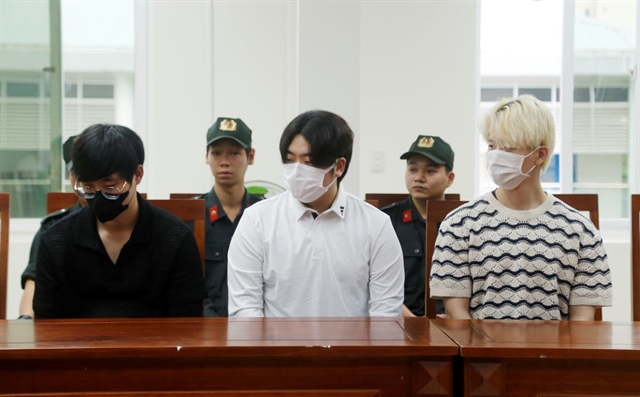 Society
Society

On the night of December 26, 1972, Nguyễn Văn Cầu returned to his house on Khâm Thiên Street after a late shift at Hà Nội Mới (New Hà Nội) newspaper.
HÀ NỘI — On the night of December 26, 1972, Nguyễn Văn Cầu returned to his house on Khâm Thiên Street after a late shift at Hà Nội Mới (New Hà Nội) newspaper.
When he got there, all he could see were flames and ruins, with cries ringing out in the dark. The entire street had been laid to waste by bombs dropped by 30 US B52 aircraft.
Before leaving his house to go to work, the last thing he did was tell his family to hide in a bomb shelter.
The pain he felt was unbearable when he arrived at the shelter at 19 Sân Quần Alley to find his wife’s body half buried in rubble.
His son, brother and two nieces could not be found.
He lost five loved ones that night.
The shelter could not save innocent civilians from the carpet bombing which ravaged 1km of the densely-populated area, destroying almost 2,000 houses, pagodas, temples, schools and clinics.
“Two big bombs were dropped either side of Khâm Thiên Street. The one that hit the shelter killed more than 50 people inside,” Cầu said.
“The authorities took the unclaimed bodies to Văn Điển Cemetery for burial. My brother’s body was not found until two months later in a garbage dump,” he said.
Khâm Thiên Street was ravaged on the night of December 26, 1972. VNA/VNS File Photo |
Cầu’s relatives were among 287 civilians killed in one of the largest airstrikes ever carried out by the US Air Force in the capital.
Among the victims were 91 women, 40 elderly people and 55 children. Up to 290 others were wounded.
In just one night, about 8,000 local residents were left homeless, and 178 children were made orphans. There was also a man who lost his wife just two days after their marriage. Some families were completely wiped out.
After seven days of consecutive bombings across Hà Nội, local residents returned home on Christmas Day, believing the enemy would not conduct any raids during the holiday.
The raid on Khâm Thiên surprised everyone because it held no strategic value for the Americans.
Nguyễn Văn Hòa, living at 31 Khâm Thiên Street, then a high school student, was lucky to survive the raid.
“I still vividly remember it. The feeling back then is much lighter now, but the obsession is always there: dilapidated houses, smoking bombs, ruins.”
“The B52 attacks always took place at night. The next morning, everyone saw the entire street had been razed and we could see from one end to the other end. Rescue forces had to work hard to recover the victims. The whole scene was such a disaster.”
“After 47 years, this area has changed so much, way different to what it was before. Today, thanks to the efforts of the Khâm Thiên people, everything has been restored. But for the previous generation like us, it is still unforgettable,” he told Việt Nam News.
Every year, December 26 is the joint death anniversary of nearly 300 Khâm Thiên people.
In 1973, in remembrance of the victims, a memorial of a woman holding a child lying motionless in her arms was erected at No 51. The woman appears to be taking a step forward with a blank expression on her face, showing the spirit of ‘never give up”.
The memorial has become a gathering point for local people every year to mourn the victims and to look back at the past when Hà Nội’s people and troops fought and won a legendary victory.
During the 12 days and nights of the 1972 campaign, dubbed “Hà Nội-Điện Biện Phủ in the Air”, the Vietnamese Air Force shot down 81 aircraft, forcing the US to sit down at the negotiating table to sign the Paris Agreement in 1973 and pull out of Việt Nam.
“There is Vietnamese saying that ‘one should not hit a man when he is down’. Losses of the past cannot be changed. Now we have normalised relations with the US following our State policy,” Nguyễn Văn Cầu, now in his 80s, said.
“I think Việt Nam-US relations now follow the spirit of “shelving the past, looking to the future”, because Việt Nam is willing to be friends with all countries. We should together preserve peace and create a peaceful environment to build and develop the national economy and improve people’s lives for independence, freedom and happiness,” Hòa, the witness, said. — VNS




